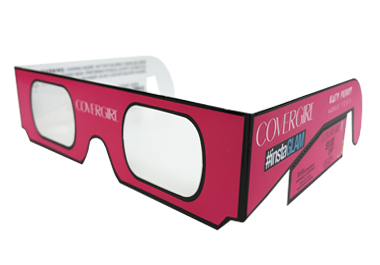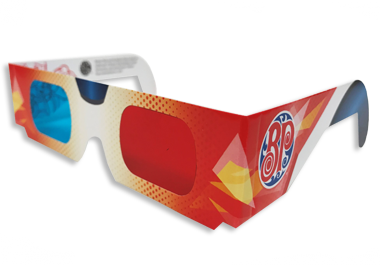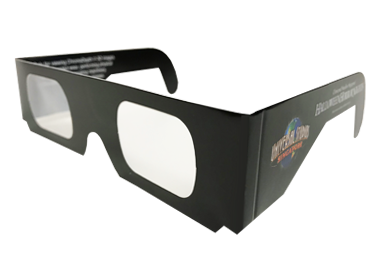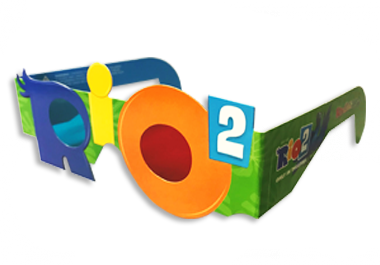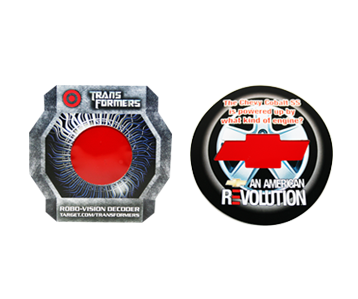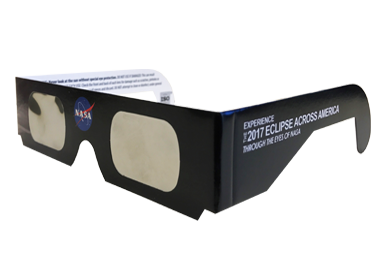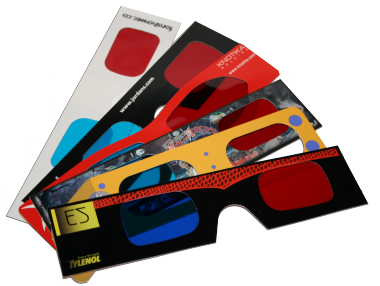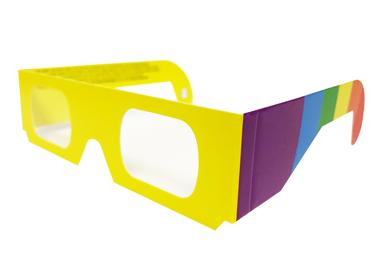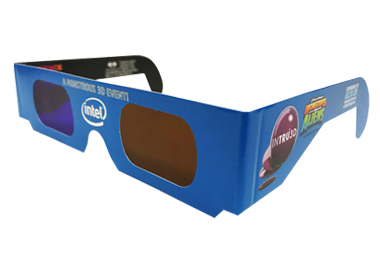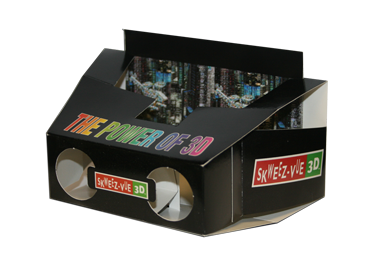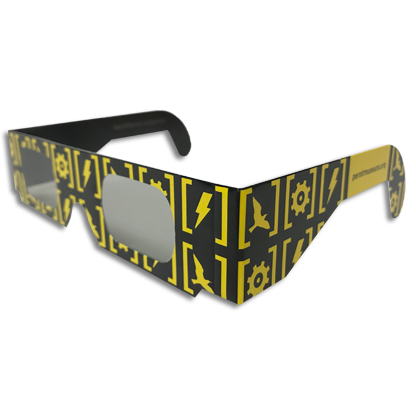
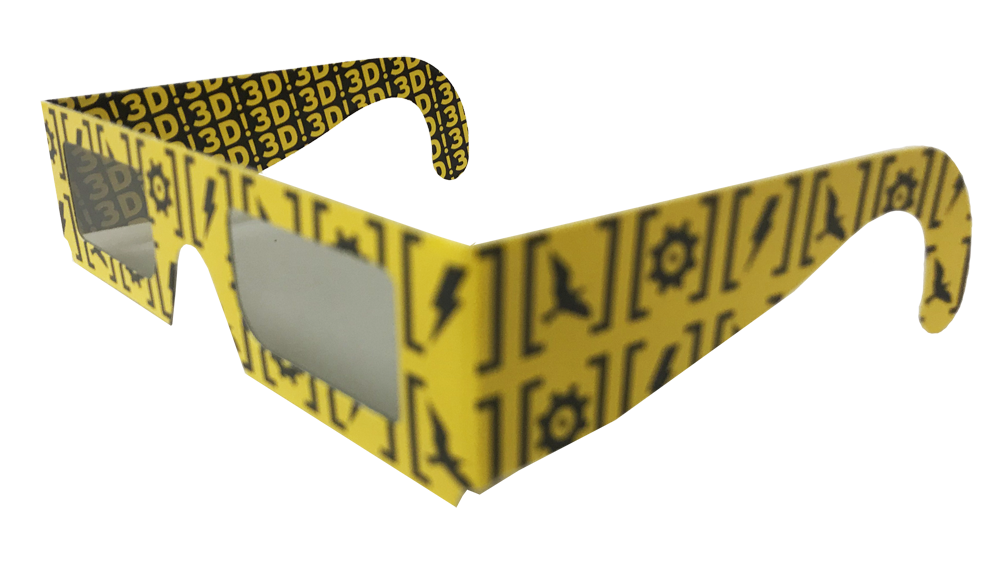
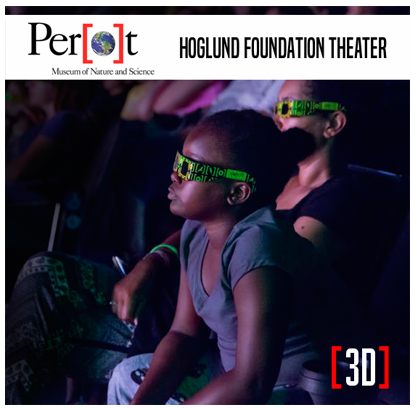
 1
1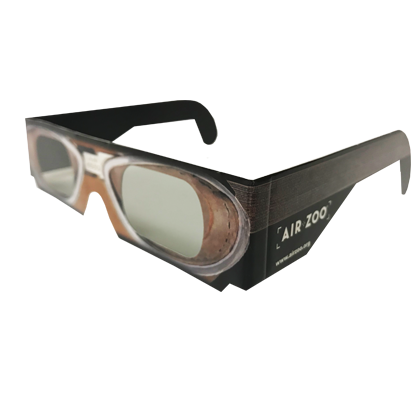 2
2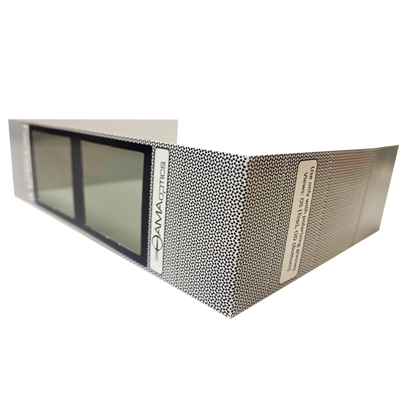 3
3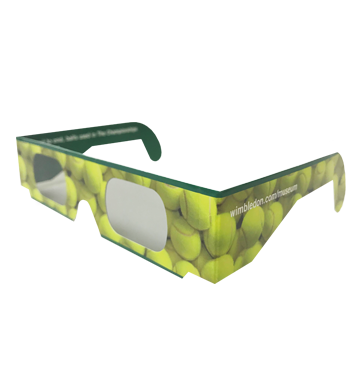 4
4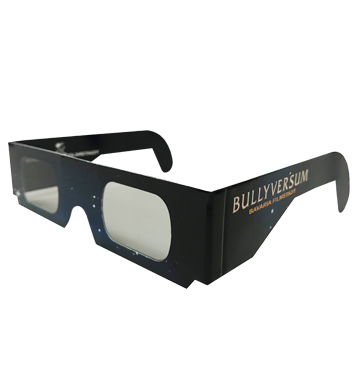 5
5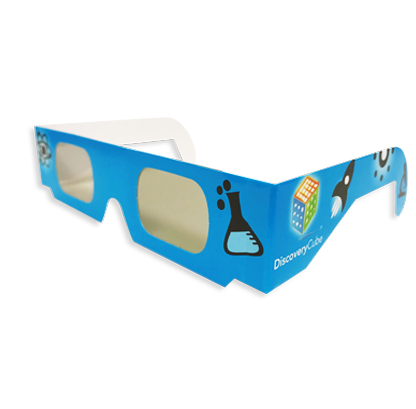 6
6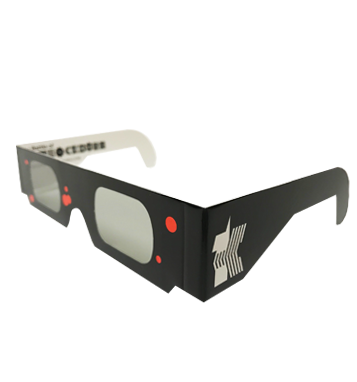 7
7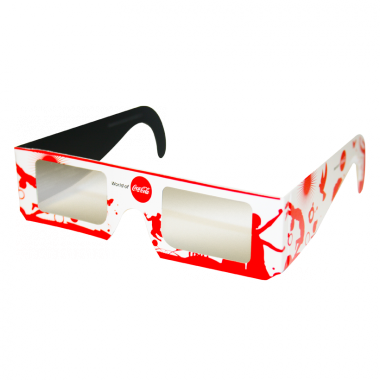 8
8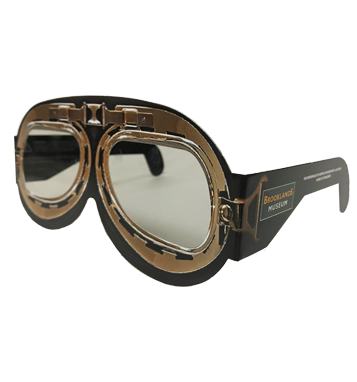 9
9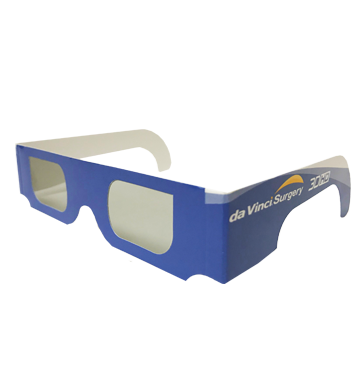 10
10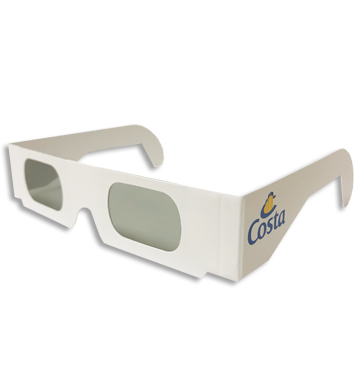 11
11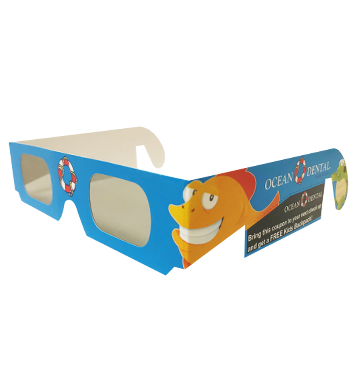 12
12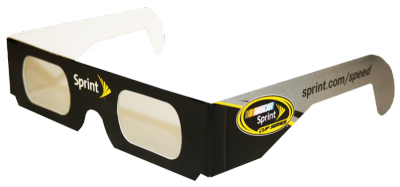 13
13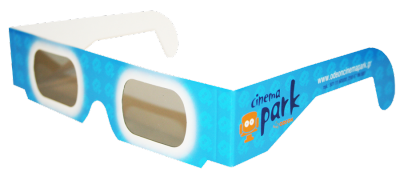 14
14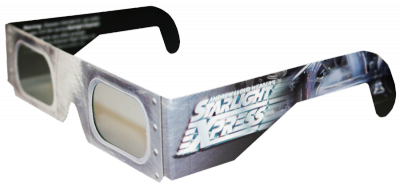 15
15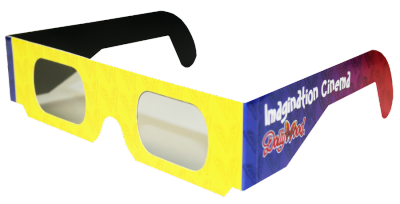 16
16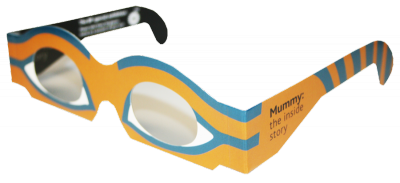 17
17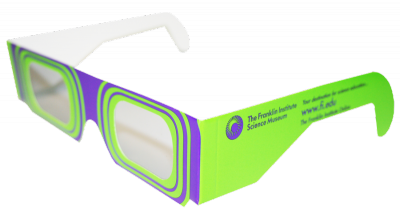 18
18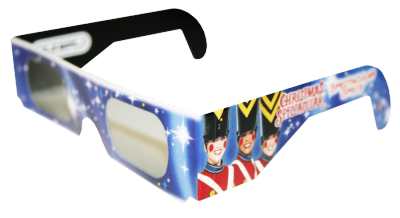 19
19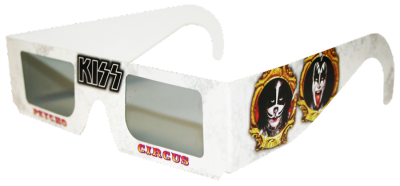 20
20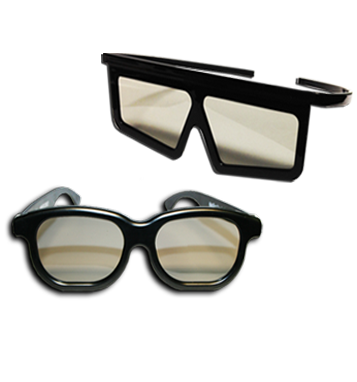 21
21


 1
1 2
2 3
3 4
4 5
5 6
6 7
7 8
8 9
9 10
10 11
11 12
12 13
13 14
14 15
15 16
16 17
17 18
18 19
19 20
20 21
21American Paper Optics, the world’s leading manufacturer of 3D polarized glasses for special venues, expos, and museums, produces superior polarized glasses featuring the highest quality 6-ml polarizer film. Linear polarized glasses contain light gray filters cut at opposing 45-degree angles for viewing slide shows, multi-media displays, concerts, movies, and ride simulators. American Paper Optics is THE source for all types of polarized 3D glasses. We manufacture both linear (45°/135° and 0°/90°) and circular polarized 3D glasses. We stock all lens configurations in plain white paper frames, reusable theme park plastic frames, and the more stylish aviator style plastic frames as well as single use theatrical style Circular Polarized glasses for digital theaters.APO was awarded a prestigious six year contract to manufacture over 1.4 million 3D Polarized glasses per year for Radio City Music Hall® “RockettesTM Christmas Spectacular” which opened with a two-minute digital 3D movie. For eight years, APO has manufactured 45°/135° polarized glasses for the Lausanne, Switzerland Olympic Museum’s 3D presentation of the 1998 Nagano Winter Olympics. Two million glasses were manufactured for Coke® Mexico’s touring 3D show, “Rockola.” More than 2,000,000 of our 3D glasses have donned theater lovers’ faces for the revival of Andrew Lloyd Webber’s roller skating Broadway spectacle “Starlight Express.” The British Museum of Art in London choose APO to design and manufacture 700,000 polarized 0°/90° glasses for the multi-media experience “The Mummy: The Inside Story in 3D.” American Paper Optics supplies both the World of Coke and the Georgia Aquarium in Atlanta millions of polarized glasses each year. Our Circular Polarized paper glasses are used all over the world in theaters including for the opening of Avatar in Egypt and for Piranha 3D in India.
Read MoreWhen you think about polarized 3-D glasses, it probably takes you right back to your childhood. You might remember watching 3-D movies in a theater with those distinctive glasses, in which the left eye and right eye lenses are different colors. Or maybe you had a special picture book or comic book that came with 3-D glasses to make the images pop right off the page! Even now, this ingenious creation still has plenty of applications and can wow whole new generations of viewers.
The history behind this piece of pop culture is quite fascinating, and they actually have a longer history than you might think. Here is some interesting information on the unique history of 3-D glasses:
The origin of 3-D viewing came about in the late 1800s, when some of the pioneers of 3-D imaging created 2 different views of the same picture — one with a red filter, and one with a blue filter — and glasses in which each lens had a different color to match one of the filters. By looking through the glasses, the image from the left eye and the one from the right eye came together to form a 3-D picture.
These 3-D glasses models were a bit overburdened and heavy, simply because the only way to have a viewing filter was through packs of thin glass sheets. Even though an idea was forming regarding these glasses, it would still be several years before they would become more relevant and widespread in use.
Even though they were originally developed in 1890, they would not become more popular until 1936 when they were a part of an exhibit at New York Museum of Science and industry. It was here that they were part of an exhibit that showed viewers a movie called “Polaroid on Parade.” They also utilized 16 mm kodachrome film during this occasion as well.
The 3-d glasses made another appearance at the 1939 World’s Fair, where they were utilized to show a short film at the Chrysler Pavilion Complex. Interestingly enough, the glasses were made out of handheld cardboard and were cut in the shape of the front of a 1939 Plymouth.
One of the first full-length 3-D movies to come out premiered on November 26, 1952 and was called “Bwana Devil.” This movie was about a group of Tsavo man-eating lions that are terrorizing a crew building a railway in Uganda. Besides being the film that sparked the first 3-D glasses craze in the United States, it is also notable for starring Robert Stack, who would go on to find fame as the host of “Unsolved Mysteries” when he was older.
These first 3-D movies needed special projection equipment called anaglyph color film. In the 1970s, many of these movies would be re-released and re-shown with updated 3-D technology.
Beginning with the 1970s, 3-D technology saw a lot of improvement. First of all, there were a lot of updated movies this technology was utilized for, including Andy Warhol’s Frankenstein. This technology was on full display there, with unusual plastic polarizers slit at the length and bent at the temples along with several designs to serve as the bridge piece.
In the 1980s, linear polarization became a standard feature in 3-D movies. This characteristic would include it being “confined” to a given “plane.” in other words, linear polarization was more in order with lines and made many 3-D more realistic.
Although the popularity of 3-D movies would wane slightly after the 1980s, they experienced a resurgence in the 2000s with the advent of the IMAX and other mediums. Many of these movies were shown with the benefit of computer animation and digital projection. This was paired with Master Image 3D in order to create a new concept called “circular polarization.” These are exciting times for 3-D technology indeed!
Recognized as the world’s leader in polarized technologies, American Paper Optics can help you with all aspects of your next project. Whether it is just a few plain paper or plastic polarized 3D glasses for a stereo slide show or you need a custom shaped, custom lens orientation for a major theatrical production, APO can provide the ultimate depth experience-we do it all! Give us a call or e-mail us for custom quotes, projects, or if you need technical information on polarized glasses.
When you think about polarized 3-D glasses, it probably takes you right back to your childhood. You might remember watching 3-D movies in a theater with those distinctive glasses, in which the left eye and right eye lenses are different colors. Or maybe you had a special picture book or comic book that came with 3-D glasses to make the images pop right off the page! Even now, this ingenious creation still has plenty of applications and can wow whole new generations of viewers.
The history behind this piece of pop culture is quite fascinating, and they actually have a longer history than you might think. Here is some interesting information on the unique history of 3-D glasses:
The origin of 3-D viewing came about in the late 1800s, when some of the pioneers of 3-D imaging created 2 different views of the same picture — one with a red filter, and one with a blue filter — and glasses in which each lens had a different color to match one of the filters. By looking through the glasses, the image from the left eye and the one from the right eye came together to form a 3-D picture.
These 3-D glasses models were a bit overburdened and heavy, simply because the only way to have a viewing filter was through packs of thin glass sheets. Even though an idea was forming regarding these glasses, it would still be several years before they would become more relevant and widespread in use.
Even though they were originally developed in 1890, they would not become more popular until 1936 when they were a part of an exhibit at New York Museum of Science and industry. It was here that they were part of an exhibit that showed viewers a movie called “Polaroid on Parade.” They also utilized 16 mm kodachrome film during this occasion as well.
The 3-d glasses made another appearance at the 1939 World’s Fair, where they were utilized to show a short film at the Chrysler Pavilion Complex. Interestingly enough, the glasses were made out of handheld cardboard and were cut in the shape of the front of a 1939 Plymouth.
One of the first full-length 3-D movies to come out premiered on November 26, 1952 and was called “Bwana Devil.” This movie was about a group of Tsavo man-eating lions that are terrorizing a crew building a railway in Uganda. Besides being the film that sparked the first 3-D glasses craze in the United States, it is also notable for starring Robert Stack, who would go on to find fame as the host of “Unsolved Mysteries” when he was older.
These first 3-D movies needed special projection equipment called anaglyph color film. In the 1970s, many of these movies would be re-released and re-shown with updated 3-D technology.
Beginning with the 1970s, 3-D technology saw a lot of improvement. First of all, there were a lot of updated movies this technology was utilized for, including Andy Warhol’s Frankenstein. This technology was on full display there, with unusual plastic polarizers slit at the length and bent at the temples along with several designs to serve as the bridge piece.
In the 1980s, linear polarization became a standard feature in 3-D movies. This characteristic would include it being “confined” to a given “plane.” in other words, linear polarization was more in order with lines and made many 3-D more realistic.
Although the popularity of 3-D movies would wane slightly after the 1980s, they experienced a resurgence in the 2000s with the advent of the IMAX and other mediums. Many of these movies were shown with the benefit of computer animation and digital projection. This was paired with Master Image 3D in order to create a new concept called “circular polarization.” These are exciting times for 3-D technology indeed!
As the world's leading manufacturer and marketer of 3D products, we are your one stop shop for anything 3D.























